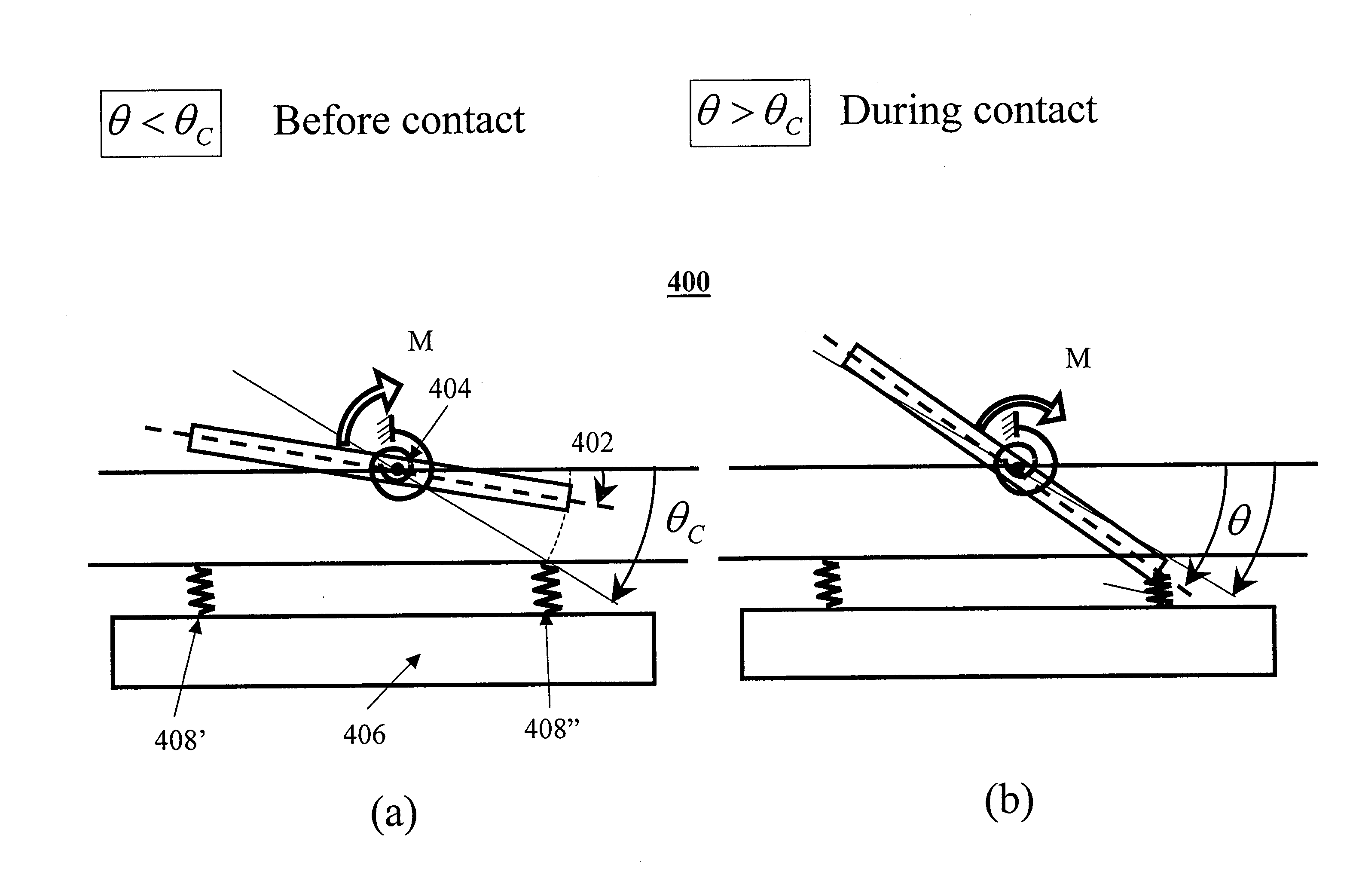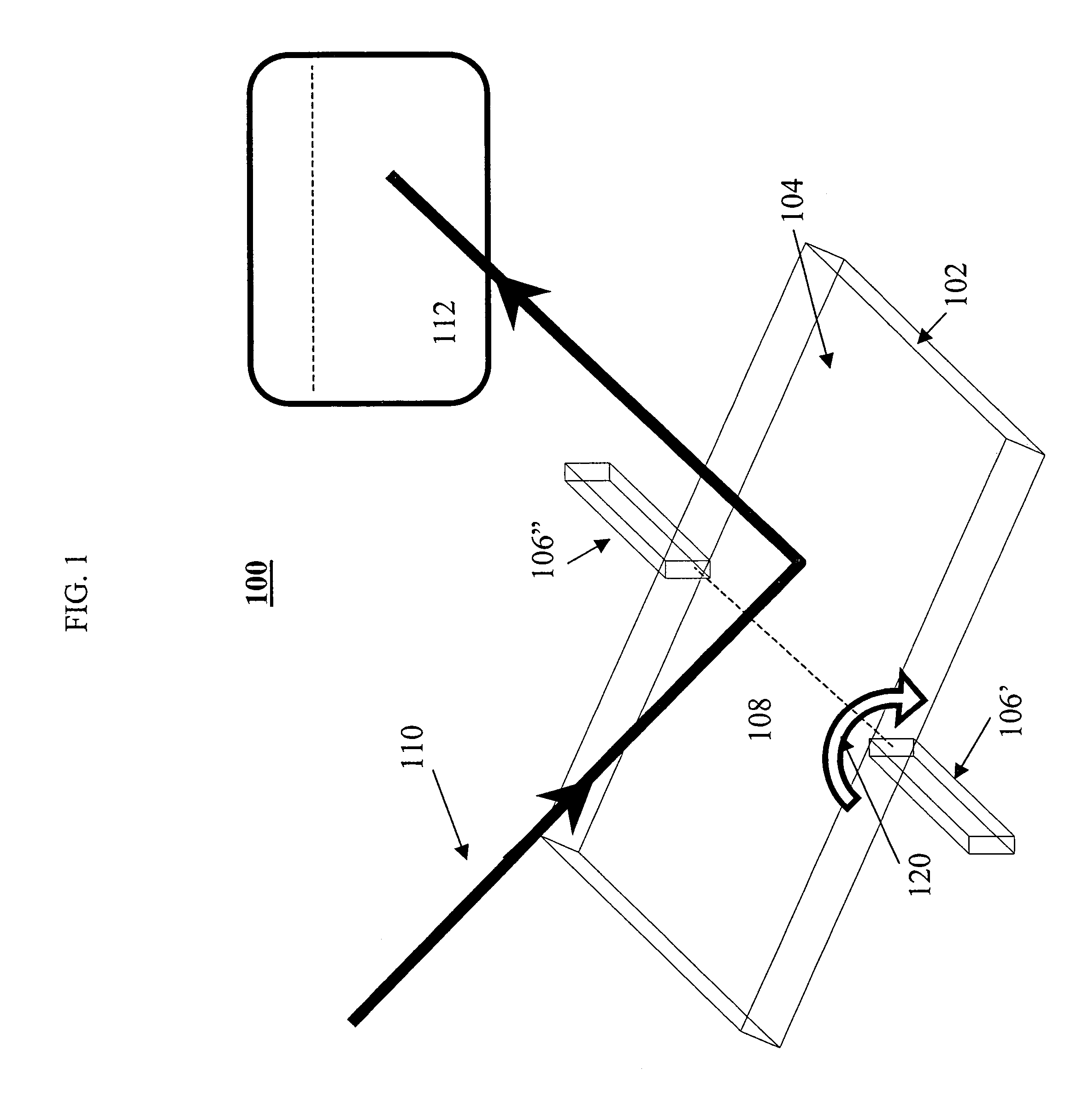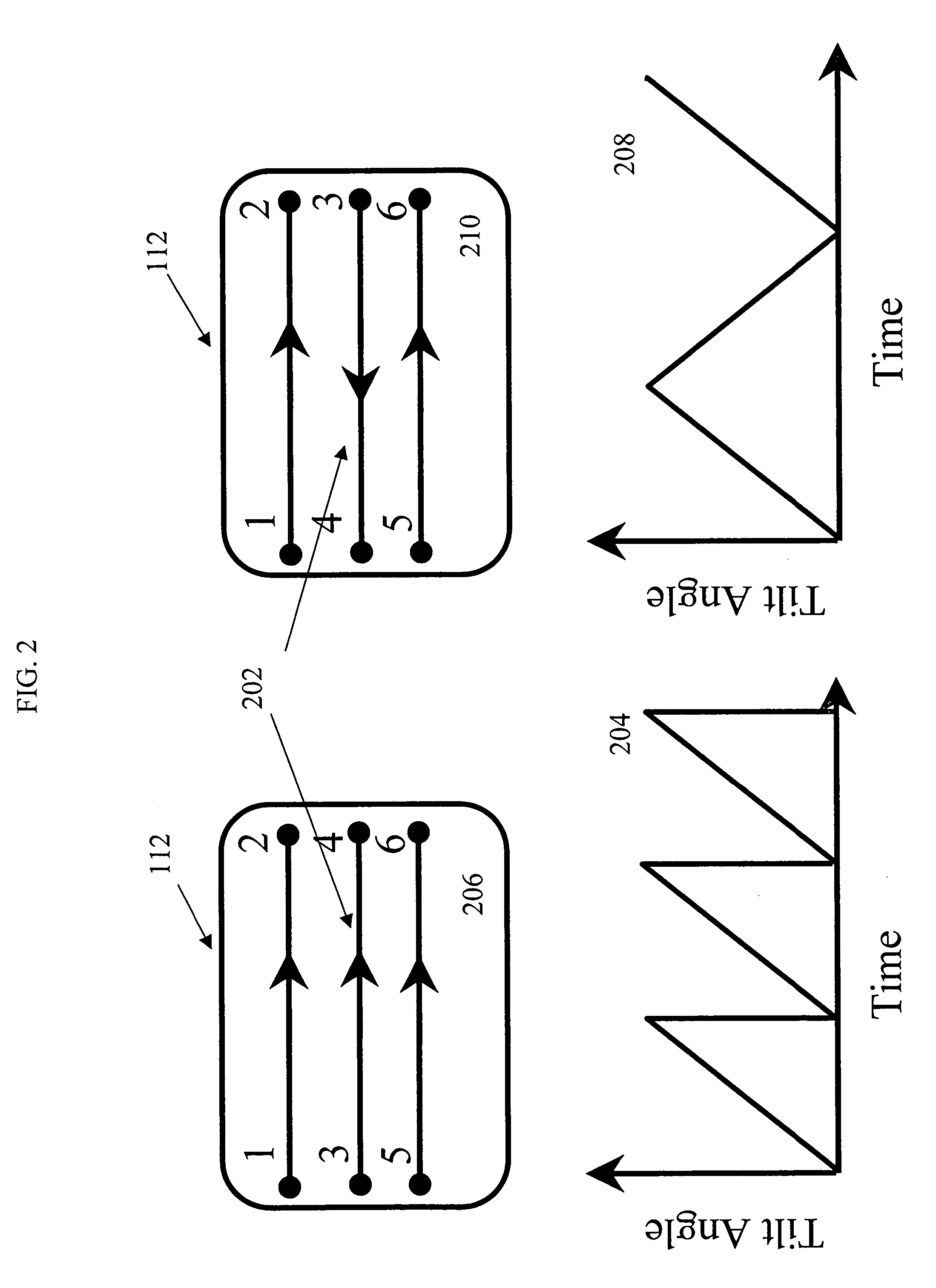Bouncing mode operated scanning micro-mirror
a micro-mirror and bouncing mode technology, applied in the field of tilting micro-mirrors, can solve the problems of high uncertainty, difficult to provide, and difficult to meet, and achieve the effects of improving linearity, improving accuracy, and improving scanning performan
- Summary
- Abstract
- Description
- Claims
- Application Information
AI Technical Summary
Benefits of technology
Problems solved by technology
Method used
Image
Examples
Embodiment Construction
[0058]The present invention discloses a tilting bouncing mode micro-mirror that uses either an additional stiffness element (“bouncer”) or a pre-curved nonlinear stiffness element to achieve a superior scanning performance. While a bouncer such as a cantilever or beam is an element with linear stiffness, we have found inventively and advantageously that its cooperative action with other elements of the system (specifically a torsion spring) that have a different stiffness yields a combined “nonlinear stiffness element” effect. The bouncing mode uses an actuation operation mode based on a special nonlinear actuation and control principle. The “bouncing-mode” actuator that actuates the mirror is operated in the self-exciting mode and its motion is actually a limit cycle. The actuator moves the mirror in a piecewise linear trajectory. The nonlinear actuation and control principle provides a set of desirable features such as small size and weight, low power and low heat dissipation, hig...
PUM
| Property | Measurement | Unit |
|---|---|---|
| angles | aaaaa | aaaaa |
| angle | aaaaa | aaaaa |
| depth | aaaaa | aaaaa |
Abstract
Description
Claims
Application Information
 Login to View More
Login to View More - R&D
- Intellectual Property
- Life Sciences
- Materials
- Tech Scout
- Unparalleled Data Quality
- Higher Quality Content
- 60% Fewer Hallucinations
Browse by: Latest US Patents, China's latest patents, Technical Efficacy Thesaurus, Application Domain, Technology Topic, Popular Technical Reports.
© 2025 PatSnap. All rights reserved.Legal|Privacy policy|Modern Slavery Act Transparency Statement|Sitemap|About US| Contact US: help@patsnap.com



